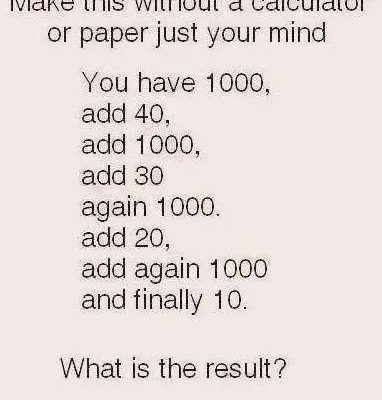Are you ready for a brain teaser that will challenge your mental math skills? The question seems simple: start with 1000, add a series of numbers step by step, and come up with the final result. Sounds easy, right? But puzzles like this often trick people into making simple mistakes. So, let’s dive in! Can you calculate the final answer without using a calculator or paper? Take a moment to work it out in your mind before we break it down together. What do you think the final result is?
Why This Puzzle Tricks So Many People

At first glance, this question seems straightforward. All you have to do is follow the sequence of additions. However, there’s a reason so many people get it wrong—it’s designed to confuse your mental math process. Here’s why this happens:
- Rushing Through the Steps
Most people are tempted to calculate quickly and mentally keep track of the total. This often leads to skipping a step or losing accuracy when adding numbers in your head. - Overlooking Key Details
Small details, such as the placement of each “1000” or smaller numbers like “40” and “10,” can throw off your calculation. You might subconsciously misplace numbers, especially when they alternate between larger and smaller values. - Mental Overload
When doing mental math, keeping track of multiple numbers can feel overwhelming. The sequence of numbers here is cleverly structured to confuse your brain as it juggles the running total.

